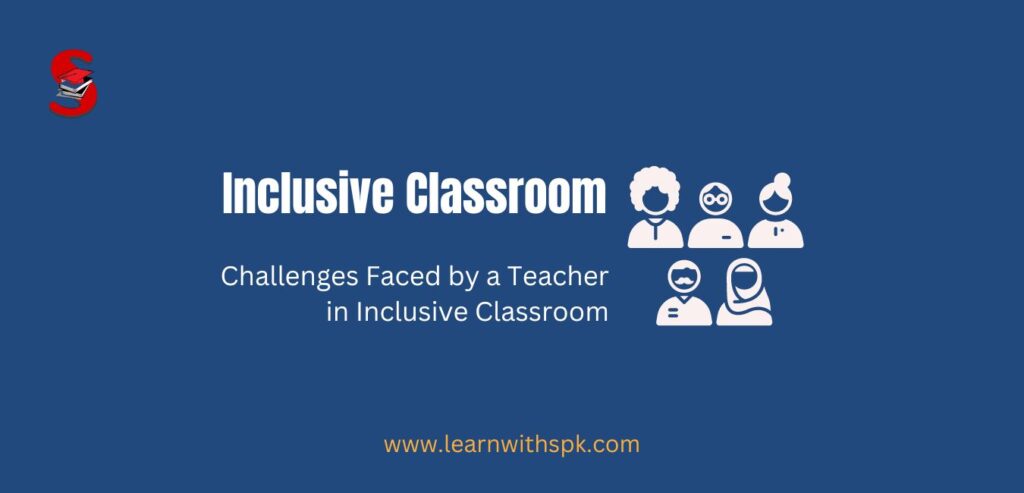What are inclusive classrooms? What are the different challenges faced by teachers in Inclusive Classrooms? In this article, we will discuss the key challenges faced by a teacher in an inclusive classroom. We will discuss in detail all the challenges faced by a teacher while instructing in an inclusive classroom.

What are Inclusive Classrooms?
Inclusion is the acceptance of all people regardless of their differences. It includes all the students with different differences within the same situation. Inclusion also allows people to value their differences in each other. For better understanding, you have to know about inclusive education.
Inclusive classroom is a wonderful concept but it takes a lot of training, patience, and compassion on the part of these teachers. Ranging from typically developing students to severely and profoundly disabled students, it becomes a challenge for the teacher to find a balance to serve all the students.
9 Challenges Faced by a Teacher in Inclusive Classrooms
Inclusive classrooms are good for promoting equality among learners. But at the same time, a teacher has to face many difficulties in an inclusive classroom.
A teacher faces the following challenges or difficulties in an inclusive classroom:
#1 Lack of Experience in an Inclusion Setting:
Teachers who have not been exposed to special needs classrooms may face disadvantages. Educators need to coordinate efforts and understand the needs of the classroom in terms of developing skills and lesson plans.
#2 Lack of Experience Dealing with Severe and Profound Disabilities:
Students with severe and profound disabilities require more adaptation and medical attention than the average student. Lack of experience can lead to the child not progressing with skills or cause adverse medical incidents.
#3 Including all Students in all Activities:
Inclusive classrooms must be able to involve students in all classroom activities. Teachers need to address how the classroom will communicate with each other and encourage participation. If there is a lack of adaptive equipment or adaptive communication and language tools it is difficult for teachers to function in a united classroom.
#4 Handling Death – Key Challenges Faced by a Teacher in Inclusive Classrooms:
Among students in special education classrooms, there are often some with severe chronic illnesses that may result in death. Handling this is a challenge to which special education teachers will have to adapt.
#5 Shortage of Teacher Aids:
Teaching Aids is important because it helps a teacher to efficiently run a class. Also, it helps create interest among the learners and explain things better. Thus, the shortage of Teacher Aids is one of the challenges faced by teachers in inclusive classrooms.
Normally, inclusive classrooms have a regular educator and a special needs educator. Due to the nature of the classroom and size, there must be an appropriate number of teacher aides to assist the teachers with day-to-day activities.
#6 Teaching Compassion to Students – A Challenge Faced by Teachers in Inclusive Classrooms:
Not all students have been exposed to persons with special needs, which becomes a challenge for teachers. This becomes a challenge to teachers. Teachers must not tolerate sensitiveness and cruelty and teach that all students are to be treated with respect, regardless of ability.
#7 Dealing with Parents of “Typically Developing” Students:
As some students are not used to dealing with persons with special needs, parents are no exception. Teachers need to convey to parents how the classroom is conducted and that all educational needs will be met.
#8 Individualized Lesson Plans:
Because there are varying abilities in the classroom, teachers can be challenged to address individual academic needs based on ability.
#9 Coordinating Therapies:
A special needs inclusion classroom needs to be well organized and allow for students to attend therapy sessions. However, this becomes a challenge in planning day-to-day activities and keeping all students engaged and learning.
Hope this article will help you to understand the difficulties or challenges faced by teachers in inclusive classrooms. Although inclusive classrooms improve the quality of education, a teacher needs to face many difficulties while organizing the classroom.